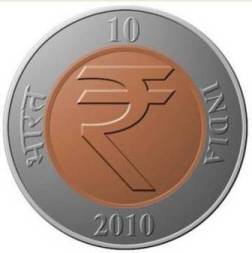New Delhi, Sep 29:
The Indian rupee on Thursday tumbled to its lowest level in the last one week after the army announced that it had carried out “surgical strikes” on terror camps across the Line of Control (LoC) with Pakistan.

The Indian currency, which opened at 66.44 to a US dollar, had already depreciated in the initial hours of the day’s trade in line with the weakness in Asian currencies.
The sharp fall occurred around 1.00 p.m. when the rupee depreciated to 66.95 to a US dollar. This level was last seen on September 22.
However, the Indian currency bounced back marginally to 66.85 to a greenback before speculative selling dragged it lower to 66.90 at 4.10 p.m.
“Indian rupee along with Indian bonds and Indian equities made a knee jerk reaction as markets digested the news of India’s surgical strikes against terrorist camps,” Anindya Banerjee, Associate Vice President for Currency Derivatives with Kotak Securities, told IANS.
“Rupee weakened towards 66:92 from 66:40 levels. However, intervention from the central bank contained the slide. We hope the geopolitical situation is contained.”
Banerjee pointed out that once the situation stabilises, then the rupee and bonds will be able to recover in the coming sessions.
“India’s macros are strong and such knee jerk reaction do not sustain beyond a couple of sessions. We expect a near term range of 66.40-67.20,” Banerjee said.
According to Soumyajit Niyogi, Associate Director, Credit and Market Research Group with India Ratings & Research: “For the day, rupee is likely to stay close to 67.”
“Intensifying cross-border tension certainly doesn’t auger well for the capital markets and currency. With improvement in situation, rupee can restore its strength in the coming days,” Niyogi told IANS.
“With further deterioration, rupee can face intensified pressure when large FCNR (B) (Foreign Currency Non Resident (Bank)) is due for redemption in the coming two months, along with looming uncertainties over capital flows and rate trajectory.” (IANS)


Comments are closed.